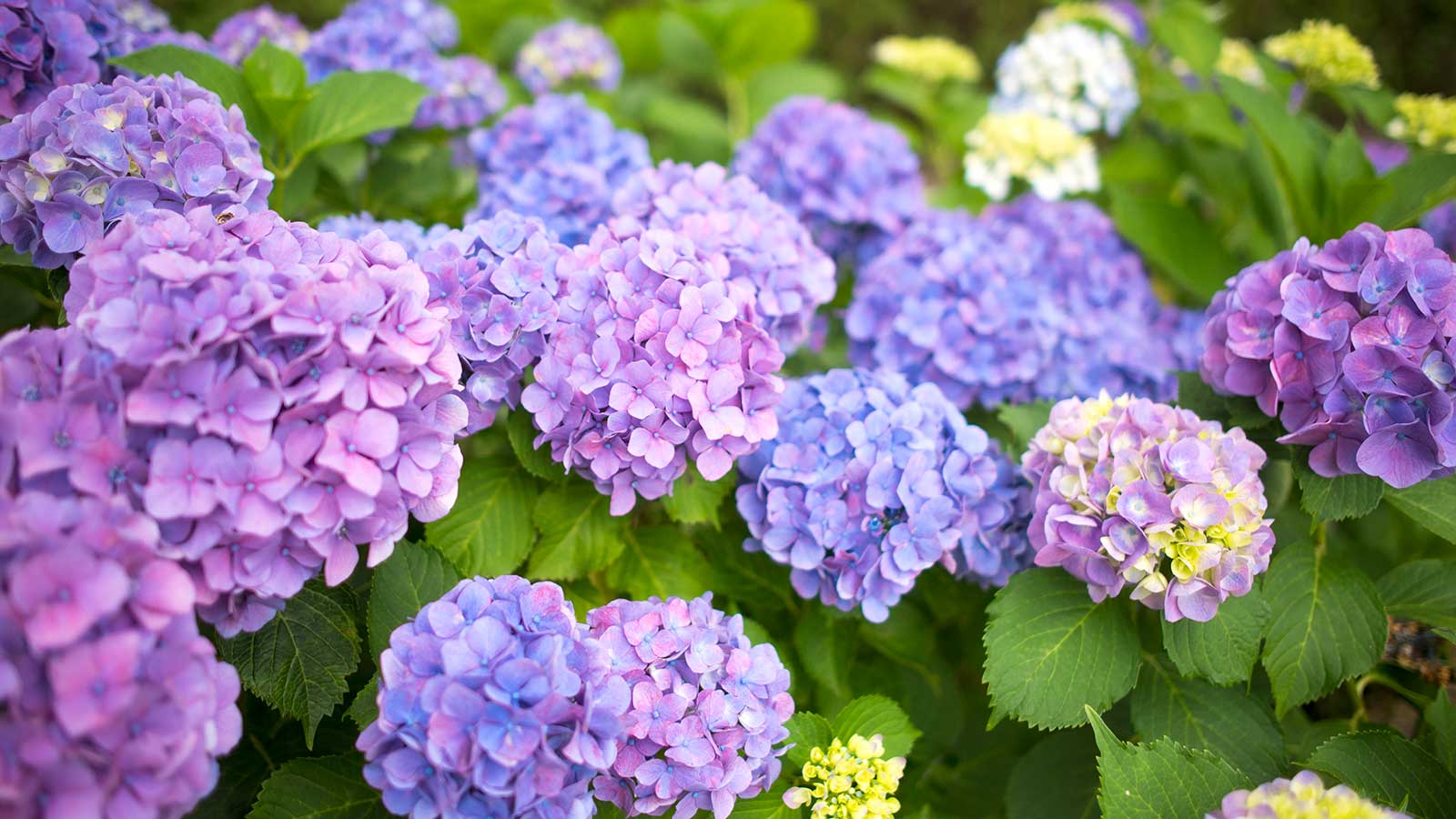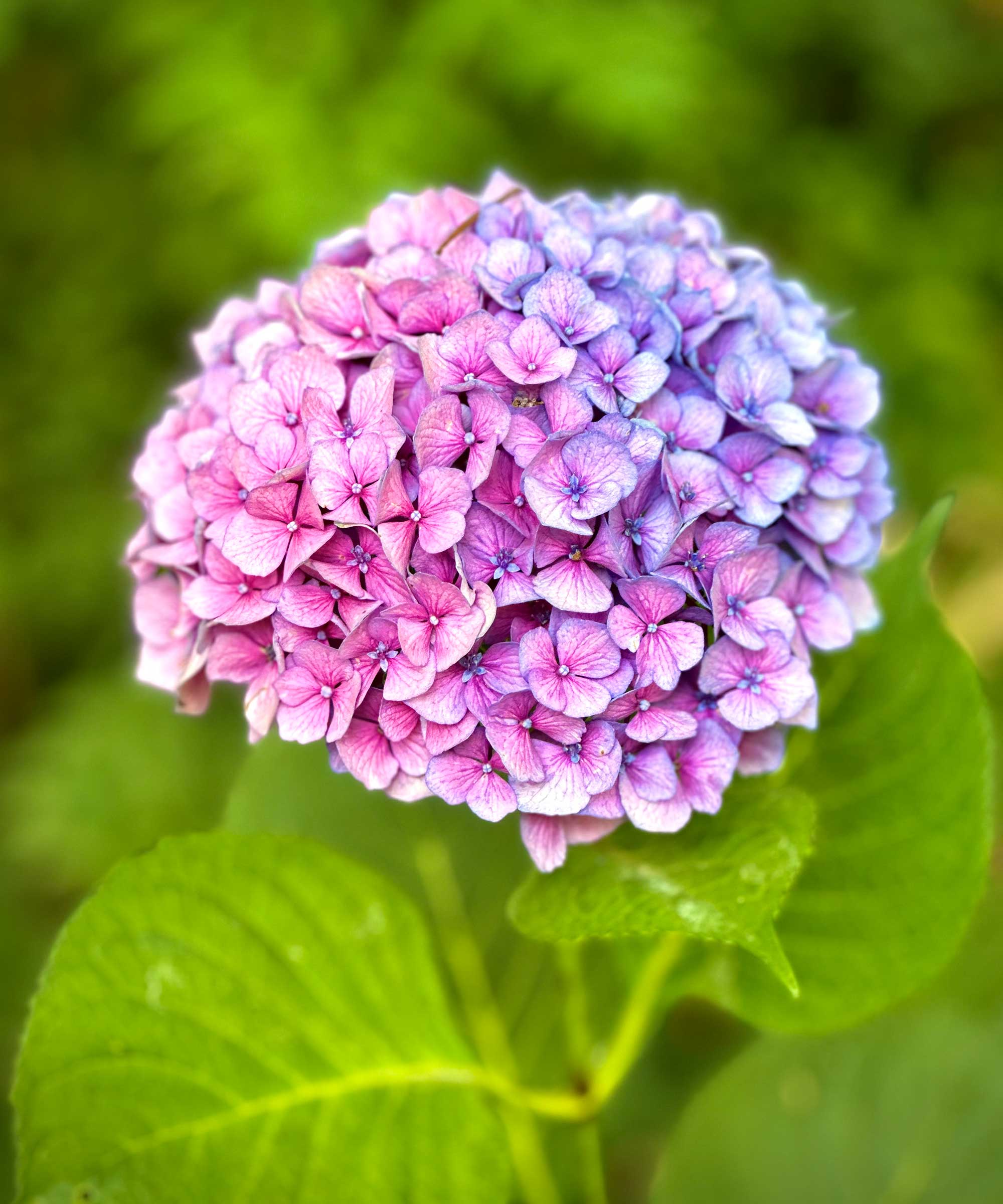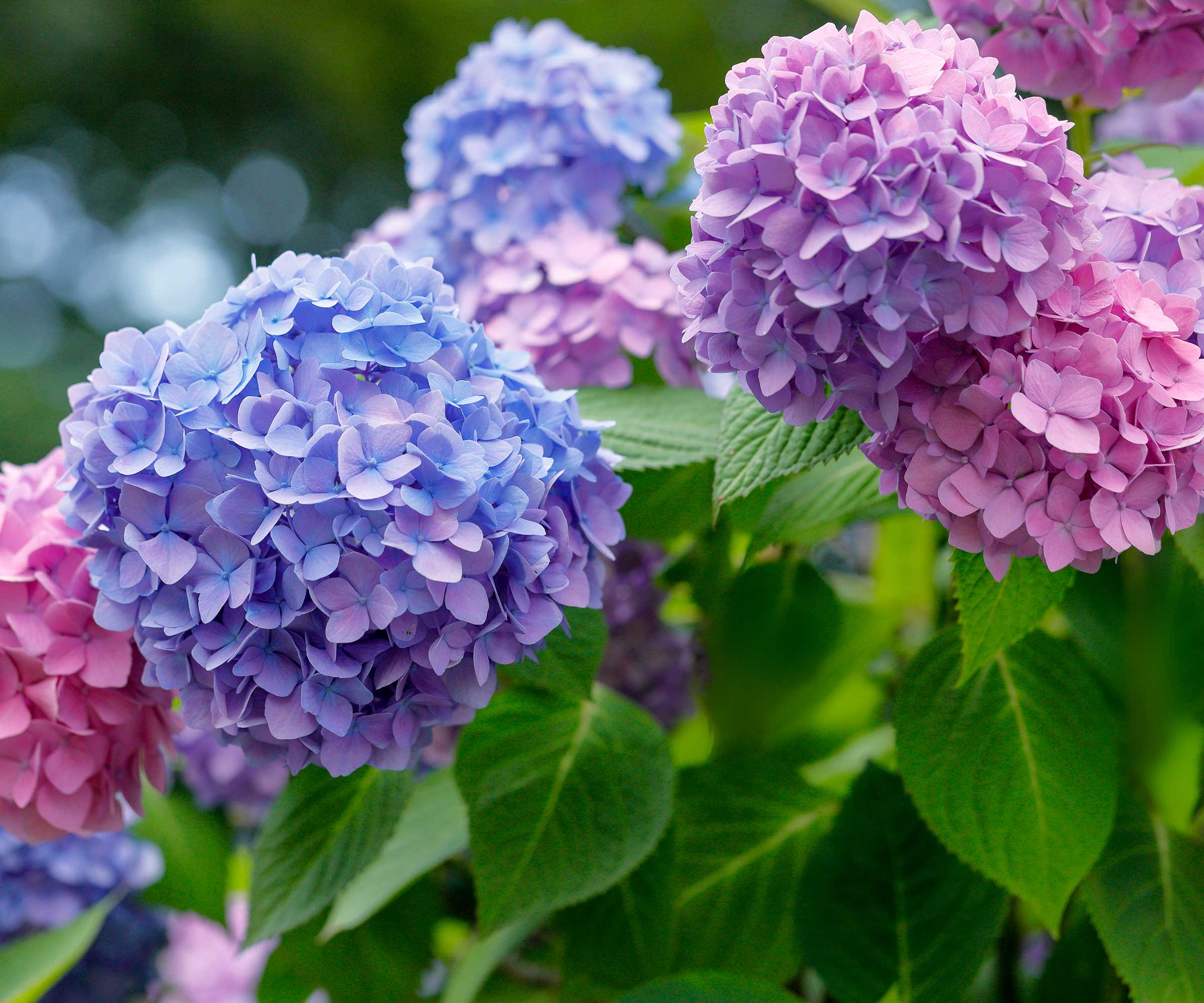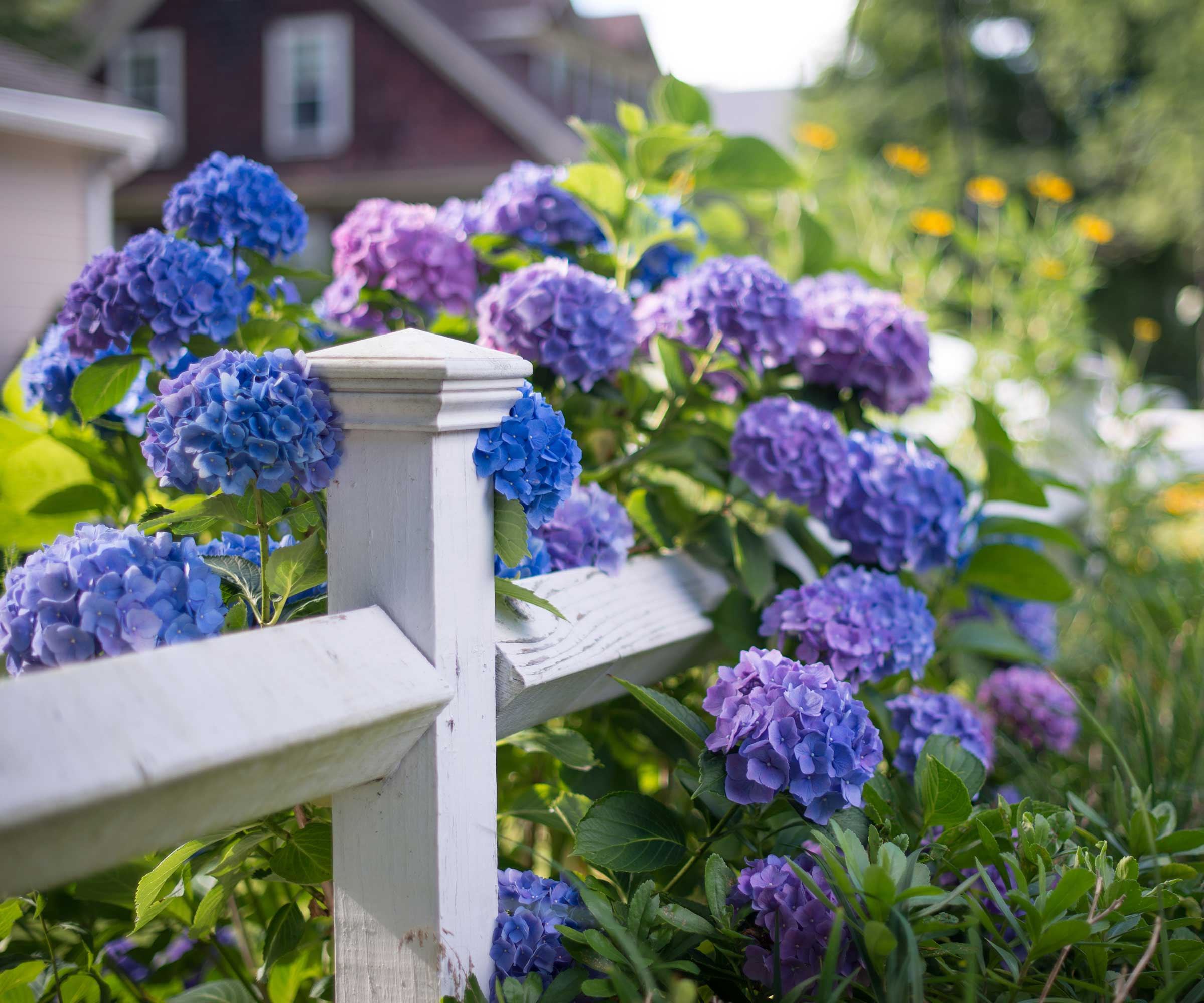
Q: Is it true you can change the color of hydrangeas' flowers? I have a pink one in a large patio pot, but I am interested in turning it blue – how can I do so?
A: Changing pink flowers to blue and vice versa is indeed possible with some varieties of hydrangeas: Hydrangea macrophylla and Hydrangea serrata. This seemingly magical transformation is all down to the type of soil plants are growing in, and it can be controlled by green-fingered enthusiasts with a bit of know-how and patience.
Below, gardening pros explain the science behind this intriguing phenomenon. Plus, they share tips on how to try it out for yourself, when growing hydrangeas at home.

Expert tips on how to change hydrangea color
Whether growing hydrangeas in pots or in the ground, this advice will come in handy to maintain or change their color.
Why hydrangea flowers can change color

Hydrangea flowers are pink or blue depending on the level of available aluminum present in the soil, explains Kristen Pullen of Star® Roses and Plants. The pH level of the soil plays a major role here, as aluminum ions are only mobile (and available) under acidic conditions.
'For hydrangeas to be blue, there must be both mobile aluminum and acidic soil,' she says. If this is the goal, you'll want to aim for a pH level of 6.0 or below.
On the other hand, a pH level above 7.0 means the soil is alkaline, and will result in pink or reddish flowers. If the pH level is somewhere in between, the blooms are likely to be purple, or a mix of both blue and pink.
How to change the color of your hydrangea's flowers

'Soil testing is a great starting point if you're hoping to change the color of your hydrangea blooms,' says Anna Ohler, owner of Bright Lane Gardens nursery. Soil pH testers are available on Amazon – this one also measures moisture and light levels.
Once you know where your soil is on the scale, you can make moves to adjust it according to the color you want.
Remember, for blue flowers, you'll need to make sure it's acidic. Kirsten says, 'The best soil acidifier for this is a product containing aluminum sulfate. It will both lower the pH of the soil and add aluminum.' You can also lower the soil pH by adding garden sulfur, notes Anna.
Niwar Nasim, president of Nasim Landscape, also suggests using an organic, acidic mulch, such as pine needles – 'a great way to maintain lower pH levels over time.' If you're growing your flowering shrub in a pot, using a soil mix made for acid-loving plants, such as this one from Coast of Maine at Amazon, is also a good way to help keep those blooms blue.
For pink flowers, Anna recommends incorporating garden lime into the soil to raise the pH. This garden lime from Jobe's Organics at Amazon is a well-rated choice.
This product can be applied to all types of soil to lower the pH and help hydrangeas turn blue. It can also be used when growing acid-loving plants, such as azaleas.
How long does it take to change the color of hydrangea flowers?
Changing the color of your hydrangeas won't happen overnight – it may take several months.
Anna Ohler says, 'Some areas may have soils that lean heavily towards the acidic side, or heavily toward the alkaline side. In areas like this, it can be tricky to turn the color of your hydrangeas and may take a few seasons to successfully adjust your soil pH.'
'It's important to regularly test your soil’s pH to make sure it stays within the right range for your desired hydrangea color,' adds Niwar.
Will white hydrangeas change color according to soil pH?
White hydrangeas, such as 'Annabelle', are increasingly popular and look fabulous in contemporary and cottage garden schemes alike. They will not change color according to the pH of the soil. However, the flowers of some varieties, such as Bobo® panicle hydrangeas from Nature Hills, will put on a pinkish hue as they age.
Need more advice for these blossoming beauties? Our guides on how to prune hydrangeas and watering hydrangeas are full of practical tips.







